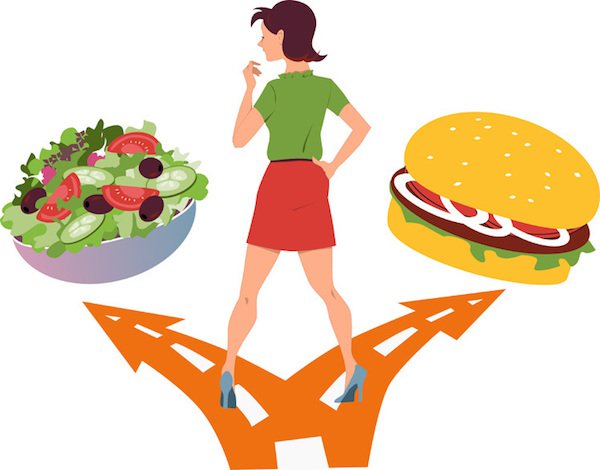

The title of this article isn’t an exaggeration: If you make it a regular, consistent practice, gratitude will change your life for the better.
I can make this promise with great confidence because it happened to me, even though I began my experiment with gratitude as a huge skeptic. I never thought that something as simple and “cheesy” as pausing to actively appreciate the small moments and comforts in my days and sharing my gratitude with others would have any meaningful impact on how I felt.
I’ve never been so happy to be wrong. Not only did gratitude help me find more joy in my days without having to work harder or push myself more, it also became one of my most trusted Daily Anchors, which helps me manage stress better, feel more resilient when life storms come, and create meaningful, uplifting relationships with people in my life and work.
But you don’t have to take my word for it because thousands of studies show that developing a grateful mindset is the most direct path to helping you feel happier, less anxious and stressed, and more fulfilled by your daily experiences, your work, and your relationships.
If you’re nodding as you read this because you already know about the benefits of gratitude, that’s awesome. But I want to ask you a question I often ask people in the audience during my talks:
Are you actively practicing gratitude?
Usually, the answer for most people is no.
So here’s what I want you to consider:
Gratitude is like broccoli.
We all know broccoli offers us meaningful health benefits, but we only actually feel these benefits if we eat the broccoli. Just thinking about broccoli doesn’t give you a health boost! And, you can't just eat it once!
In the same way, knowing that gratitude is good for your mood, resilience, and relationships or reading articles like this one about its benefits, doesn’t actually bring those benefits to your life.
You have to practice it.
Actively, intentionally, consistently.
And the awesome thing is that every single time you do, you feel good. In fact, the moment you begin to think of something you’re grateful for, your brain releases dopamine, which is a neurotransmitter that makes you feel good. Every time you pause to appreciate something and share your gratitude with another person, your brain releases serotonin, another feel-good neurotransmitter.
Gratitude is literally that magic pill we’re all searching for that makes us feel good, is always accessible, and has zero negative side effects. And its benefits extend far beyond ourselves: When you share your gratitude with others, you help them feel seen, valued, elevated, and help yourself feel more closely connected to people in your life.
OK, I hope you I’ve got you convinced to make gratitude a priority.
My call to action for you is this:
Can you make a commitment to yourself to practice gratitude at least once a day for the next 10 days?
It takes longer than that to make it a habit, but from my experience in teaching gratitude to hundreds of thousands of people, I know that 10 days is a good amount of time to get your gratitude momentum going, feel some benefits, and see which practices feel most natural to you to continue.
To help you, here are my absolute favorite gratitude practices. Perhaps you want to try one every day for the next 10 days to see which ones feel most natural and which ones you want to stick with regularly. Or maybe there’s one that’s calling your name and you want to practice it daily for the next 10 days.
Whatever feels good, do it, but hold yourself accountable to your commitment to begin to practice your gratitude skills consistently for the next 10 days. I believe in you and know you can do it—imagine the world we would all live in if every single person made this commitment to themselves today.
10 super practical ways to practice gratitude as part of your daily routine
#1: Three Gratitudes Before Your First Email
Before you open your email in the morning, capture 3 things that you’re grateful for in some way—write them down, take a photo, say them or text them to someone else. Remember, the more specific you can be the better and small things count. (Consider writing your 3 gratitudes as your first email of the day and sending it to a friend or team member—when you share what you’re grateful for, you boost the positive effects while encouraging the recipient to practice gratitude, too.)
It's easier to stick to a new habit when you connect it to something you already do regularly, which is why I’m asking you to connect your gratitude to checking email in the morning—I know it’s something we all do, almost instinctively.
#2: Daily Gratitude Bookends
Begin and end your day by writing down a few things you’re grateful for. Literally bookend your day with gratitude. If you’re not a journaling type, that’s fine—how about sharing what you’re grateful for with someone else, like a family member, friend, or co-worker - in person or via text or email? You won’t just be practicing gratitude for yourself but inspiring them to do it also. Remember to be as specific as possible and don’t neglect really small moments.
#3: Gratitude Antidote
When something stresses you out—too much traffic, an annoying colleague, etc.—use it as a reminder to practice gratitude. You don’t have to be grateful for whatever is stressing you out (I’m not going to be cruel and make you do that), but use it as a nudge to pause, take a breath, and think of something, however small, that you are grateful for in that moment. When you do this, you prevent your brain from going into a negativity spiral, where one annoying thought brings on another, and another, and another, until you have a really rough day.
#4: Gratitude Meeting Bookends
Begin team meetings at work with a gratitude moment—either sharing something you appreciate or expressing specific and genuine gratitude towards someone. End the meeting the same way by asking if someone else would like to express their gratitude. If it feels awkward, it’s OK—you’re doing something new and a bit vulnerable, so it’s normal for it to feel a little weird. You can say something like: “I thought we’d try this new practice I read about…”
This is my absolute favorite practice to bring gratitude into your workday, feel happier, and have better, more productive meetings. I’ve seen hundreds of teams of all shapes and sizes practice this and be surprised by how much positive impact they’ve felt from this simple practice that takes less than a minute.
#5: Say Thank You and Mean It
Make an intention for an entire day to find several opportunities to pause and express genuine thanks to the person you’re interacting with—whether it’s someone you know or someone you don’t know. Take a moment, pause, look them in the eye, smile, and say Thank you. If there is something specific you want to thank them for, do it, go the extra step, that’s awesome.
If this seems too simple to be meaningful, just try it. When I began to practice this, I realized just how often my thank yous were said under my breath, rushing out, or without my true intention behind them. I became completely addicted to this practice and now literally look forward to thanking people because I love how I feel when I see their face melt into a smile of feeling seen and valued.
#6: Pair Self-Criticism With Self-Gratitude
Every time you criticize yourself in any way, pair it with an expression of gratitude to yourself. For example, if you criticize a flaw you have—physical, mental, emotional—think of something you appreciate about yourself and say that to yourself afterwards.
This practice uses the habit most of us have of self-criticism and asks that we practice self-gratitude every time we do it. Over time, this will help you to shift the way you talk to yourself to be kinder and gentler, closer to the way you talk to other people you care about.
#7: Notice the Good
When you see or talk to someone for the first time today—a family member, colleague, a relative you see once a year who annoys you endlessly every time you do, someone you’re meeting for the first time—set your intention to notice one thing about them you appreciate. Maybe it’s their enthusiasm, something they’re wearing, how they make you feel, their sense of humor, their fantastic art of ordering lunch, anything goes. When you begin your interaction by focusing on something you appreciate vs. something you want to criticize, not only do you feel better about your interaction, but you allow yourself and the other person to have a more human, open connection.
#8: Gratitude Text
Think of someone who makes your life great, someone without whom your life would be less fun or warm or wonderful. It might be a family member, someone at work, a friend, or someone else. Now take out your phone and send them a message, telling that person that you appreciate them and expressing why. Telling this person why is really important, so please be specific. They need to know what you value about them because they might not fully realize that they’re important to you or how they support you. Or, you just may not have told them in awhile. You don’t have to write a long message; one or two sentences are great.
#9: Imagine Life Without This
Think of something in your life that you tend to take for granted. It can be as simple as running water or groceries in your fridge, or that you get to listen to music you enjoy or read books that inspire you. Now consider, for a moment, what your life would be like if you didn’t have it? Especially at times when I find myself caught up in thinking about how something is not quite right—flight is delayed, garage door is broken—I remind myself to pause and think: Imagine life without this. It doesn’t mean I don’t ever want anything or wish for something to be better, but this simple exercise fills me with deep gratitude for the many amazing things that do fill my life, and it offers a helpful way to prioritize where I spend my emotional energy. Plus, it just feels really good!
#10: Gratitude Zoom
If you’re feeling down or caught in a negativity spiral, pause and challenge yourself to find something you can appreciate within your experience, however small. For example, if you’re sad about being sick and missing out on what you would rather be doing, can you feel grateful that you have medicine or a comfortable place to recover or people around to help care for you?
Einstein wrote:
“There are only two ways to live your life. One is as though nothing is a miracle. The other is as though everything is a miracle.”
He didn’t use the word gratitude, but he was writing about it.
Because that’s the beautiful, amazing thing that happens when you practice gratitude: It turns the most ordinary moments in your days into extraordinary ones that fill you with joy and a sense of deep appreciation for being alive.
Don't miss your happier boost!
Subscribe to our weekly email to get practical tips and inspiration to help you feel more joyful and resilient.


